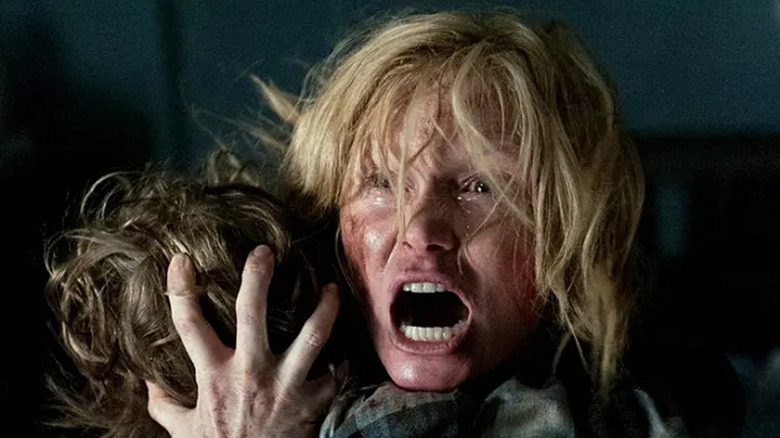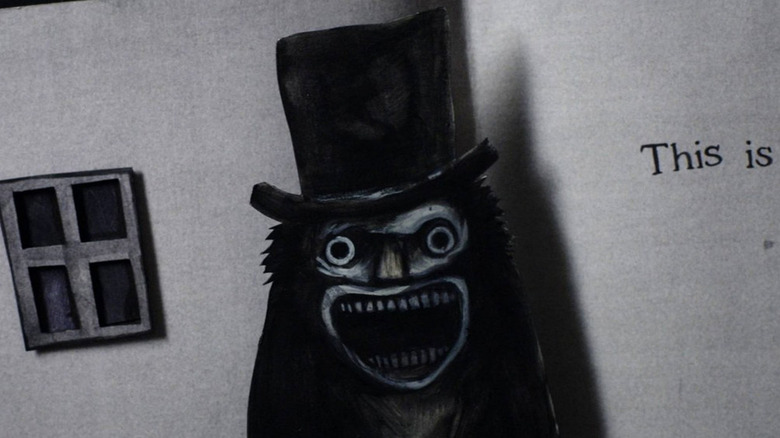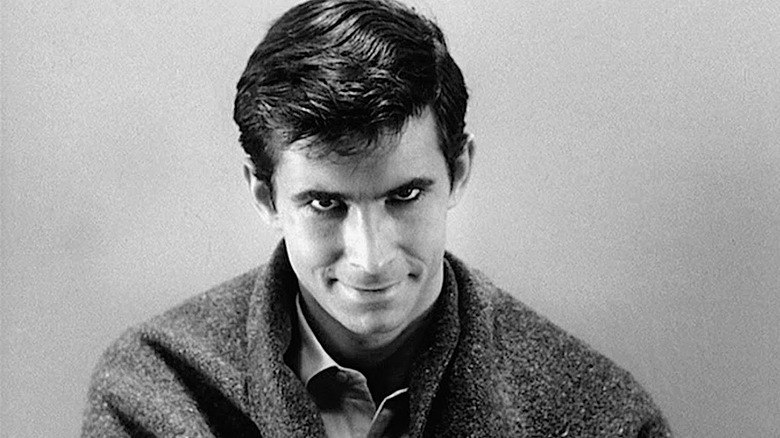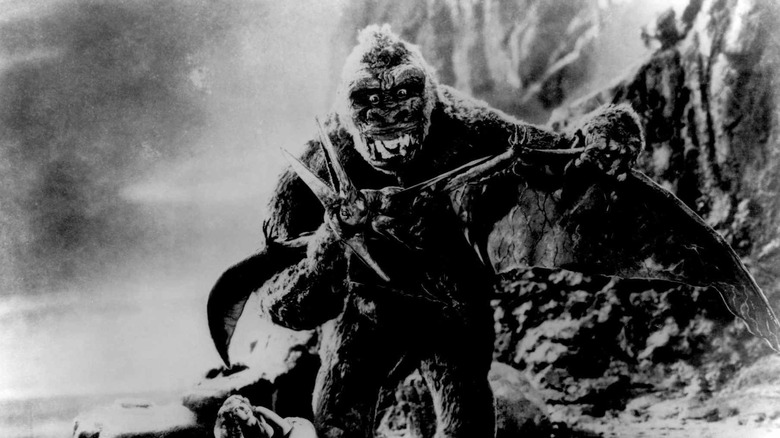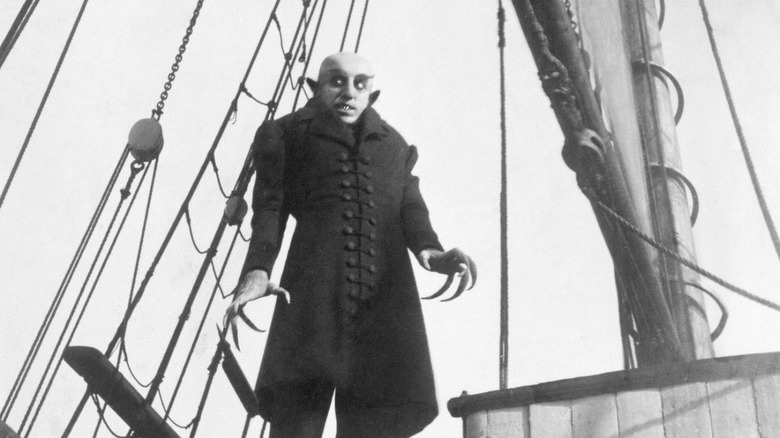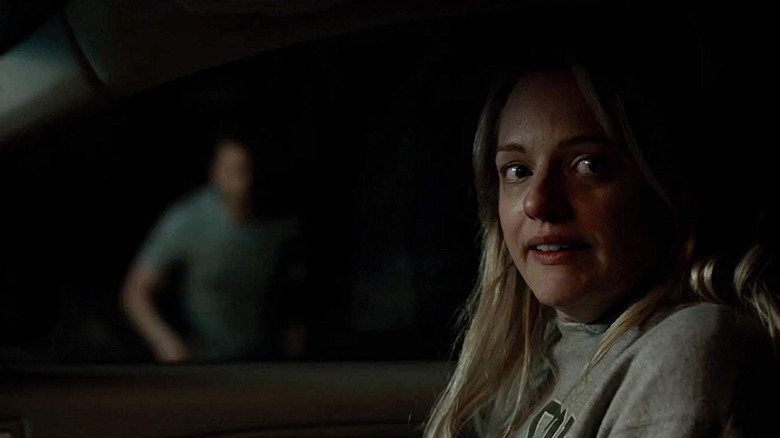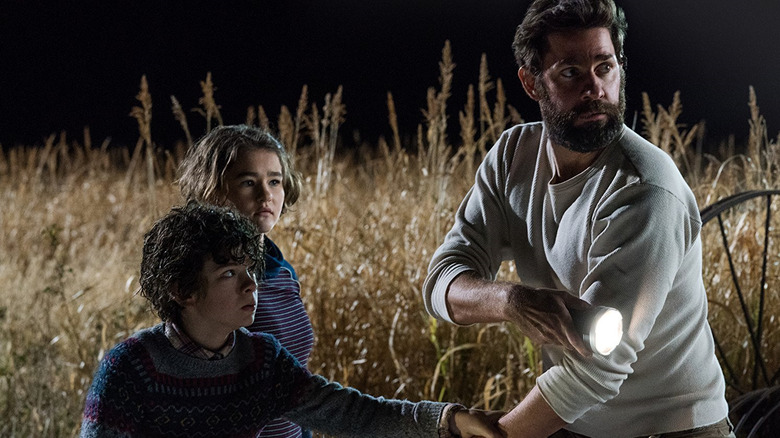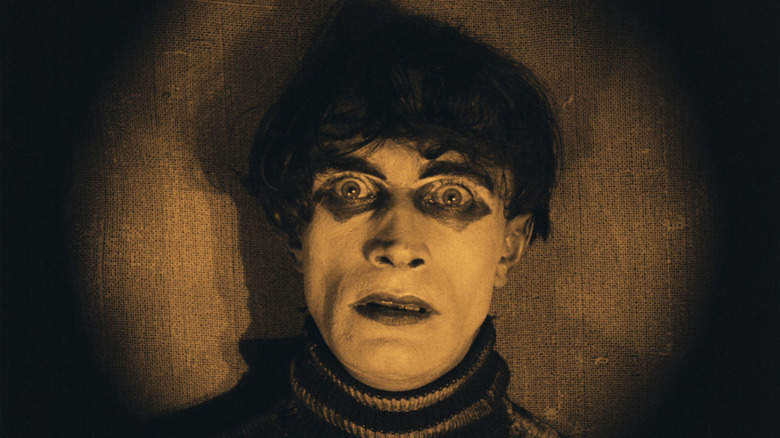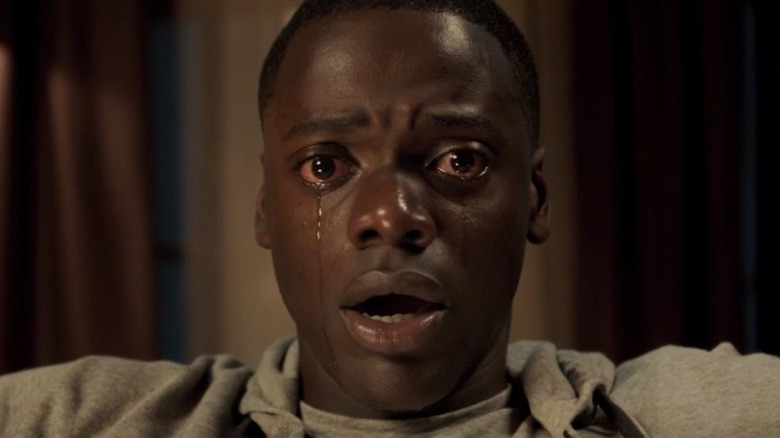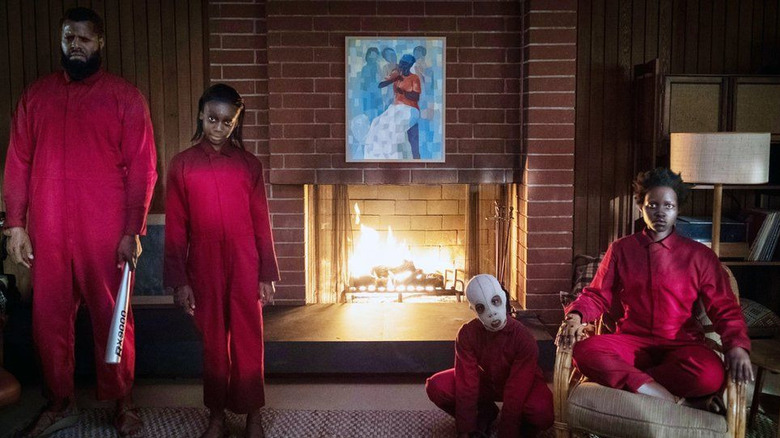The Highest Rated Horror Movies Of All Time
Asked to name the greatest horror movies of all time (and not just their personal favorites), the average moviegoer, or even the diehard genre fan, might pause to mull it over. Long-considered classics, like the old Universal creature features, require a lot of creepy justification to unseat them – but part of the fun is those that do are contenders in the conversation about tomorrow's classics. According to Rotten Tomatoes, the highest-rated horror films of all time — taking into account the number of reviews and the average Tomatometer scores of other films released during the same year — contains a few surprises, but maybe it's not so surprising to those who have seen them all.
10. The Babadook
Coming in at the No. 10 spot, with 242 reviews, is the only woman-directed film in the RT Top Ten, and it was creepy enough to scare the pants off of the man behind "The Exorcist." That's high praise. Australian filmmaker Jennifer Kent wrote and directed her feature debut, "The Babadook," based on her own short film, "Monster." The 2014 story is a structurally familiar one to horror fans, wherein a child's imaginary monster under the bed turns out to be very real and very angry. "The Babadook" concerns a widowed single mother navigating her son's fear of the titular creature of the film, a beaver hat-wearing humanoid figure with as many pearly whites as Bruce the shark in "Jaws." The figure, visually inspired in part by Lon Chaney in the long-lost silent film "London After Midnight," has since become an LGBTQ+ icon and represented everything from overwhelming grief to imperfect motherhood. Thankfully, Mister Babadook is fictional — hopefully.
9. The Bride of Frankenstein
Four years removed from directing "Frankenstein" for Universal Pictures, James Whale had grown a more prominent funny bone. His humor can be observed creeping incrementally higher with "The Old Dark House" and "The Invisible Man," leaving austerity behind in favor of the kind of wit that could be dubbed camp today. By the time he dropped "The Bride of Frankenstein" in 1935, Whale went full-blown black humor, using the horror genre's elements to confront and wink. Heaving bosoms, cruciform imagery, and dunks on the sanctity of marriage all rustled the jimmies of the powers-that-be in the Production Code Administration, which could axe a film's exhibition if it didn't toe the line. That didn't stop Whale, though. He made his changes and accepted cuts left and right to get the movie approved and even then, folks were offended. /Film's Andrew Housman writes of the censor-slipping miracle "Bride" turned out to be:
"Even after the Hays Office finally approved 'Bride of Frankenstein,' the film still met backlash from individual states and countries abroad. Ohio, where the state censorship board demanded heavy cuts related to female characters, seemed particularly offended. China wanted to cut four important scenes, while Hungary, Palestine, and Trinidad straight-out banned the film. Sweden proposed editing a whopping 25 scenes out of the film — so much content that Universal refused to hold screenings there."
The biggest element that made it past the clueless straights is the resonant queer coding in the villainous character of Dr. Pretorius (Ernest Thesiger), whose efforts eventually lead to The Bride's creation, while circumventing the old "insert Tab A into Slot B" way of creating new life. Like "Aliens" and "Hello Mary Lou: Prom Night 2," "The Bride of Frankenstein" stands (or lumbers) tall as a horror sequel that outdoes the original.
8. Psycho
There exist a precious few horror movies that create the illusion of more carnage than is actually shown onscreen. Of this, the Ed Gein-inspired "Psycho" is the gold standard, and half a century hasn't dulled its blade or effectiveness. Stephen Rebello's book "Alfred Hitchcock and the Making of Psycho" chronicles the creation and legacy of the "North By Northwest" director's most famous film, wherein Hitchcock is quoted as saying:
"It's a pretty good film. But, more important, it's the first shocker I've ever made. The pictures I've done before were thrillers. This one literally shocks you."
And shock it does. With the novel — some might say risky — tactic of introducing a heroine to be gruesomely killed off at the end of the first act, Robert Bloch's novel, on which the 1960 film is based, keeps its finger on the pulse of a uniquely American unbalance/derangement. It's through which the soiled lifeblood of "Henry: Portrait of a Serial Killer" and Jim Thompson's "The Killer Inside Me" also flows.
While relatively restrained by today's standards, Hitchcock crafts a chillingly effective and still-controversial tale of an unstable mama's boy who runs his motel with an occasional Hotel California policy ("You can check out anytime you like, but you can never leave"). Its place in RT's Top 10 is fitting; Hitchcock's arguable magnum opus pioneered on technical and cultural levels, and its shower scene is not only as "shocking" as Hitchcock calls it, but the death sequence has earned a place in the pop culture consciousness forevermore. Over 60 years after the film's release, not to mention three sequels, a remake, a made-for-TV feature, and a prequel series later, "Psycho" endures as the benchmark by which all subsequent thrillers and chillers are evaluated.
7. King Kong
No. 7 on the Rotten Tomatoes list is the film that comes to mind when the word "ballyhoo" comes up. A pre-Code fantasy creature feature, "King Kong" is the original entry in a kaiju franchise that still stomps and shouts today, influencing baddies like Mighty Joe Young and Godzilla, the latter of which he's battled with a few times onscreen. Despite coming out in 1933, its technical tricks and marvels continue to astound, from Willis O'Brien's stop-motion animated fight sequences to the vast matte painted backdrops to the rear-projection compositing that married the animation, miniatures, and live-action footage all together. The result is a story geared toward spectacle on every level, a yardstick by which subsequent monster movies would be measured.
But the proper star of the show is the Skull Island stomper himself, Kong. In his book "The Monster Show," scholar David J. Skal talks about producer Merian C. Cooper calling his shot like Babe Ruth at the plate:
"It was Cooper first struck on the idea of using a giant ape to save the basic concept; a few years before, he had a vision of a giant ape battling warplanes while perched atop the world's tallest building. Unlike lumbering elephants or dinosaurs, apes could approximate human emotion and therein Cooper intuited the mass appeal of Kong. 'I'll have women crying over him before I'm through,' Cooper is reported to have said."
Cooper was right on the money; even while clutching a screaming Fay Wray in his gorilla-like grip, Kong has since become one of the most recognizable figures in film history, regardless of genre.
6. Nosferatu, a Symphony of Horror
Of all the creative outbursts of silent film-era German Expressionism, one of the longest-enduring is an unauthorized "Dracula" adaptation. With a nice 69 critical reviews boasting a 97% rating, F.W. Murnau's "Nosferatu" sits firmly in Rotten Tomatoes' highest-regarded horror cinema, a full century after its original release. Its vampire, the pale, toothy, pointy-eared Count Orlok (Max Schreck) departed from the seductive iteration of Dracula and returned to the Bram Stoker model to inflict maximum nightmare fuel on its unsuspecting moviegoers (Stoker's 1897 novel describes more of a bushy-browed creep and less of a smoldering Chris Sarandon). In his Year of the Vampire retrospective, /Film's Joshua Meyer speaks to Orlok's stranglehold on the pop culture consciousness:
"Even if you've never watched 'Nosferatu,' chances are strong that you've absorbed the sight of Orlok through film history osmosis. Maybe you've seen him sit straight up in his coffin, stretching his long, clawed fingers toward the camera. Maybe you've seen the low-angle shot of him with masts behind him on the deck of the doomed ship that ferries him from Transylvania to the fictional German town of Wisborg. Or perhaps you've seen him bent over the neck of Ellen Hutter (Greta Schröder) in bed."
Once Orlok is beheld, he is as unshakable as Mister Babadook. Influencing generations of creators and spawning vaults of bloodsucker imagery, "Nosferatu" calcified a monstrous version of the vampire, for better and for worse. Queerness, anti-Semitism, xenophobia, sexual repression, and the aftermath of war have all shaped the context Murnau's interpretation of the vampire, using monster as metaphor the way horror is wont to do. "Nosferatu," in turn, has shaped the vampire as it was known before it became a trope, and stays a reminder that great horror films don't just scare, they haunt.
5. The Invisible Man
It turns out that the comment section on every film website is full of it: Classics can be remade, and their stories can be told just as well as the original. Leigh Whannell's "The Invisible Man" recontextualizes the Universal science fiction-horror classic to focus not on a hubristic man drunk on his ability to manipulate, but on the woman tasked to survive him. Elizabeth Moss stars as a woman who, after the apparent death of her abuser and the onset of bizarre, damaging events surrounding her, must fight tooth and nail to get anyone to believe her, much less get on her side and advocate for her. The theme hits like a sledgehammer, and it finds heavy resonance in the post-#MeToo era as accusations of abuse are still dismissed, or worse, vilified.
Moss' performance is another in her impressive wheelhouse of suffering women, bounding along in a harrowing trajectory from vulnerable to ferocious, keeping it raw the whole way along. Whannell, who has a history of infusing crisp social commentary into his thrills, supports the domestic abuse themes with visuals that put the audience on the heroine's level, using negative space to entreat the eye to search for the man of the title. The result makes mundane moments like Moss standing alone in a kitchen dreadfully intense, and in the film's greatest triumph, compels everyone who sees her story to feel her fear and sense her utter hopelessness at every setback and every incredulous look. "The Invisible Man" earns its spot in the Hall of Screams by spinning a good sci-fi yarn, but perhaps in a few decades' time it'll be credited with contextualizing a changing tide, and maybe changing a few attitudes.
4. A Quiet Place
It's an inconvenient truth of aggregate film sites that newer films will get more reviews than the time-honored treasures, so it's no surprise to see over 350 critical reviews in praise of John Krasinski's "A Quiet Place," at No. 4 on the list. Its premise, of a post-apocalyptic world overrun by vicious monsters with hypersensitive hearing, is beautiful in its simplicity and its emotional core. Its nuclear family (with Krasinski starring as its head) lives in perseverance and fear in realm where a dropped pan or a surprised yelp can mean grisly, instant death.
In spite of its 2019 release date, "A Quiet Place" makes the most of its uncomplicated conceit in a script shaped between Krasinski and co-writers Bryan Woods and Scott Beck, using the old-school approach to tension-building with a roller coaster of fright and release, screams and sighs of relief. When all is calm, the cast communicates with American Sign Language and conveys the kind of bond that endeared audiences to the Freeling family of Tobe Hooper's "Poltergeist." When a noise does occur — the whir and buzz of an electronic toy, a baby's faint cry, the clatter of a dropped picture frame — it is deafening emotionally as well as sonically. Moviegoing audiences made noise for the film at the box office, turning the monster movie's $17 million budget into a $340.9 million profit.
As a cherry on top, the sequel made /Film's list of the 12 Best Horror Movies of 2021, with Maria Loreto calling it "a more hopeful film than its predecessor, with a quick and punishing pace that will have you on the edge of your seat." The instant love for "A Quiet Place" can be distilled down to another simplicity: It says a whole lot without uttering a word.
3. The Cabinet of Dr. Caligari
By 1920, cinema as an industry had stopped walking and started running. Moving from nickelodeon novelty to a prevailing economic mechanism around the world, the medium only took two decades to evolve to a complex narrative art form. Soon enough, film became cultural artifacts as well, reflecting values and neuroses of the societies they came from (think Charlie Chaplin attacking high culture with his poignant underdog humor).
But even in cinema's early stages, a surreal German silent film signaled a seismic shift for all its peers with imagery that, to this day, is unmistakable for any other film. Robert Wiene's "The Cabinet of Dr. Caligari" tells the story of a sleepwalker compelled to kill, but it was how the story was told that made it a revelation. Shaking loose old cinematography conventions and dipping the visuals in angular, stylized German Expressionism — Tim Burton fans might recognize strains of Caligari in the production design of his works — "Dr. Caligari" was a heavy parable for unbridled authoritarianism, which would hit post-WWI audiences right where they live. Finally, artists in the medium had truly started cooking with peanut oil and begun composing. In "The Monster Show," scholar David J. Skal writes of its instant sway over moviegoers:
"It's difficult to overstate the kind of revelation 'Caligari' represented to much of its audience, which felt it was witnessing an evolutionary leap in the cinema, one comparable to the coming of sound of, decades later, to the overwhelming experience of '2001: A Space Odyssey' (1968), a film that similarly reconfigured the possibilities of cinematic space and form for the general public."
The morbid forebodings of "Dr. Caligari" still get reactions out of modern audiences, a testament to its lasting power beyond the Great War that sourced its madness.
2. Get Out
No. 2 on Rotten Tomatoes' list of highest-rated horror pictures is another directorial debut. Like Jennifer Kent, Jordan Peele made a splash right out of the gate with a feature containing dismally plausible elements made entertaining through monstrosity. Slavery, disproportionate efforts toward missing white people over Black, and the banal contributions of white liberals toward systemic racism all find purchase in "Get Out," which follows the darkest interracial meet-the-parents timeline imaginable in 2017, the year of the film's release. Daniel Kaluuya stars as a Black photographer who joins his white girlfriend, Rose (Allison Williams), on a trip to upstate New York to meet her middle-class liberal family, the kind of performative folks who let him know they would vote for Obama a third time if they could.
Wearing its horror influences on its sleeve as all Peele works do but inspired by a comedic bit, "Get Out" horrifies with its grotesque take on American racism, which could have been even darker than it was. An instant sensation about being Black in America, with unlimited meme power through its introduction of "the sunken place" into the cultural lexicon, "Get Out" is powerful enough to skip the mandatory 30-year wait to be hailed as a horror classic. With "Get Out" crossing the mainstream divide (albeit through the dreaded qualifier of "elevated horror") and snagging a Best Original Screenplay Oscar at the 90th Academy Awards, alongside Peele's "Nope" hitting theaters in the summer of 2022, it's clear there's a new Master of Horror in town.
1. Us
Coming in hot at No. 1 with 553 critic reviews and a 93% score is Jordan Peele's sophomore directorial feature, "Us," inspired in part by the "Mirror Image" episode of CBS anthology series "The Twilight Zone" (Peele also served as host-producer of the 2019-20 revival "Twilight Zone" series). As a family is terrorized by underground-sprung copies of themselves, the micro gives way to the macro as a revolution of the marginalized occurs: Good guys and bad guys aren't what they seem. It's hard to compare the movie to other doppleganger horror films, because usually to reveal they are doppleganger horror films is some kind of spoiler. Peele dives even further into horror territory than his predecessor, "Get Out," but he retains the same intense interest in the American past and its tethers to oppression, with some sharp, genre-bending humor to boot.
With a strong cast and deliberate cinematography, the former "Mad TV" cast member shows off his devotion to horror with influences from and nods to "Jaws," "The Lost Boys," "The Shining," "Halloween," and countless others. But they're far from cutesy Easter eggs; it's all in service of a strong narrative that repeats and reflects itself for a good reason.
"Us" does what the horror genre does best, using monsters and myths to tell the stories folks don't want to speak aloud. By pointing a looking glass at his characters and audience, Peele reminds Americans that their long-running fear of The Other shouldn't be as high on the list of priorities as their own mirror images. In a genre where a masterpiece like John Carpenter's "The Thing" had to wait decades to be hailed as such, it's invigorating to see audiences and critics alike giving a great film like "Us" its flowers in real time.
